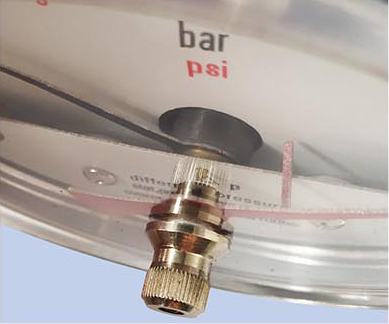
Янв . 06, 2025 11:23 Back to list
differential pressure gauge,
Differential pressure gauges are critical instruments in a multitude of industries, playing a pivotal role in ensuring operational efficiency and safety. These measuring devices are employed extensively in applications that require precise monitoring of pressure differences across various systems and components. As such, understanding their significance and the technology behind them is crucial for professionals in the field.

The primary purpose of a differential pressure gauge is to measure the difference in pressure between two points in a process. This can be vital for a variety of applications, including filtration systems, flow measurement, and level monitoring in tanks. By gauging the pressure disparity, operators can gain insights into system performance and detect potential issues before they escalate into system failures.
In the realm of filtration systems, differential pressure gauges are indispensable. They provide a clear indication of filter condition by measuring the pressure drop across the filter element. A rising pressure difference can signal clogging, indicating that it’s time for maintenance or filter replacement. This preemptive measure not only ensures the longevity of the filter but also enhances system efficiency by preventing undue stress on components.

Flow measurement is another critical application where differential pressure gauges excel. They assist in determining the flow rate of liquids and gases within pipelines. By gauging the pressure difference across a flow element, such as an orifice plate, Venturi tube, or flow nozzle, technicians can accurately compute the flow rate. This data is essential for optimizing system performance and maintaining process control.
differential pressure gauge,
In addition to functional advantages, differential pressure gauges contribute to safety and regulatory compliance. In industries such as pharmaceuticals, chemical processing, and oil and gas, maintaining precise control over process conditions is non-negotiable. Differential pressure gauges provide the necessary data to ensure operations remain within safe parameters, thereby mitigating the risk of hazardous incidents.
From a technological standpoint, differential pressure gauges can be categorized into mechanical and electronic types. Mechanical gauges offer durability and reliability without the need for power sources, making them ideal for harsh environments. Conversely, electronic gauges provide enhanced accuracy and the ability to integrate with modern digital systems, offering advanced features such as remote monitoring and data logging.
The selection of a differential pressure gauge must align with specific application requirements. Factors such as pressure range, environmental conditions, and the medium being measured play a significant role in determining the most suitable gauge. Consulting with manufacturers or industry experts can provide valuable insights, ensuring that the chosen gauge will deliver optimal performance and longevity.
In conclusion, differential pressure gauges are indispensable tools in modern industry, offering unparalleled precision and reliability. Their role in safeguarding operations, optimizing performance, and ensuring compliance cannot be overstated. As technology advances, these instruments will continue to evolve, offering even more sophisticated solutions tailored to the ever-changing demands of global industrial processes. For those in technical and operational roles, a profound understanding of differential pressure gauges is not just beneficial; it is essential for maintaining the highest standards of operational excellence.
-
High-Precision 5 Valve Manifold Differential Pressure Gauge Suppliers
NewsApr.29,2025
-
High-Precision Diaphragm Vacuum Pressure Gauges Manufacturers & Quotes
NewsApr.29,2025
-
Omega Differential Pressure Gauges High Accuracy & Durability
NewsApr.28,2025
-
Low Pressure Differential Pressure Gauges Precision Solutions & Quotes
NewsApr.28,2025
-
Digital Diaphragm Pressure Gaauge Precision Measurement & OEM Quotes
NewsApr.28,2025
-
Differential Pressure Gauge China Price High-Accuracy & Best Quotes
NewsApr.28,2025
